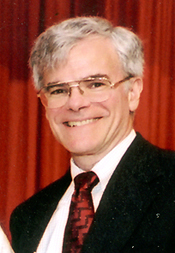YOU SHOULD NEVER
ASSUME THAT A
GENERAL AUDIENCE
KNOWS THE NATURE
OF THE BIOLOGICAL
PHENOMENON OR
QUESTION THAT HAS
CAPTIVATED YOU.
YOU CANNOT EVEN
ASSUME THE
AUDIENCE HAS ANY
SPECIAL INTEREST
IN THE PROBLEM AT
HAND.
In this space, I frequently hold forth about the importance of attending lectures at NIH to keep abreast of current developments in a field and to broaden one’s scientific perspective.
The Wednesday Afternoon Lectures and the Friday noon NIH Director’s Seminar Series were developed to expose a general audience—NIH trainees and scientists—to the best and most interesting aspects of current biomedical research.
Most of these lectures live up to our expectations, but more than occasionally, a speaker has difficulty explaining the importance of his or her work or fails to convey the most basic concepts underlying the research.
A recent complaint from an NIH scientist about the obscure nature of some of our lectures (see "Catalytic Reactions") prompted this essay on clarity in speaking about science.
Principle #1:
You should never assume that a general audience knows the nature of the biological phenomenon or question that has captivated you. You cannot even assume the audience has any special interest in the problem at hand.
So in the first few minutes of the talk, or in the first few slides, explain in simple terms the issue of interest and why you found it so engaging and important. For example, there might be some clinical relevance worth mentioning, or perhaps an important underlying biological principle is at stake.
The intent of your introduction should be to intrigue the audience and discourage them from falling asleep before you’ve even gotten to the data.
Principle #2:
Make sure a logical thread flows throughout your narrative. The best talks tell a story. The story may unfold historically or sequentially; it may weave together what at first appear to be diverse facts or fields; or it may be a who-done-it or how-we-done-it showing how you solved a long-standing mystery or problem presented in the introduction.
Merely pulling out a series of disconnected slides and showing them is bound to result in audience confusion.
Principle #3:
The story line of your talk can never be too simple. Even the brightest people appreciate clear explanations and rationales.
On the other hand, you should not insult an audience by leaving out complex experiments that are important to your argument. Omitting these from a talk leaves a logical gap that the intelligent listener cannot fill. By all means, discuss the complex experiments—but describe them in the simplest possible terms.
Principle #4:
Visual aids in your presentation—usually slides, overheads, or movies—should be relevant to the talk and free of extraneous information.
When a slide comes up, the audience begins to scan it, and the talk that accompanies each slide should aid the audience in understanding the data or pictures on the slide.
All too often, slides are cluttered with complex, extraneous information that confounds rather than enlightens the listener.
Clear slides are especially important if you are not a native speaker of your audience’s language. The principle that "simple is better" holds for slides also.
Principle #5:
Finally, assume the audience will not absorb everything you say during the talk. Do not be afraid to repeat a conclusion or important point during a talk. And always have a set of conclusions that the audience can take home.
In keeping with the final principle, here’s my take-home lesson: Think of yourself as a member of the audience who has not had a lifetime of experience working on your subject and speak to that person.
Deputy Director for Intramural Research
